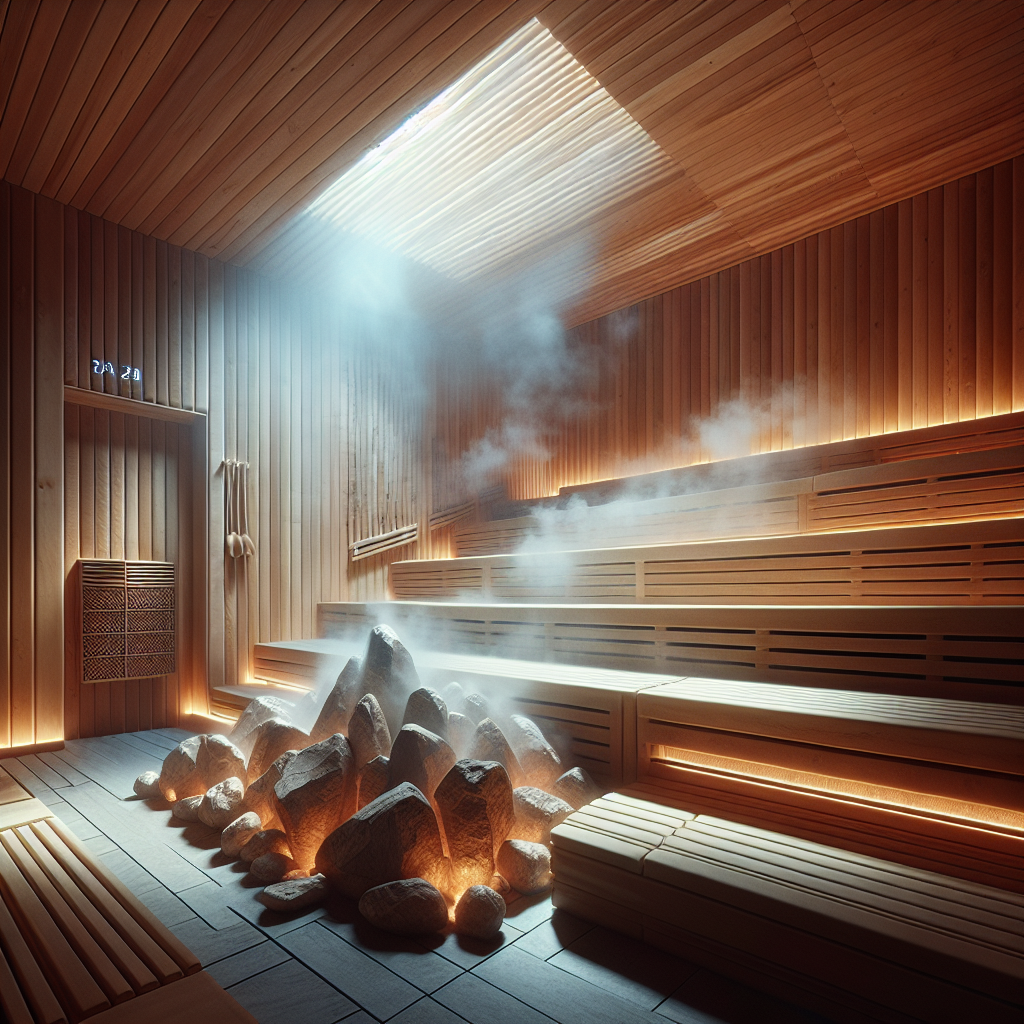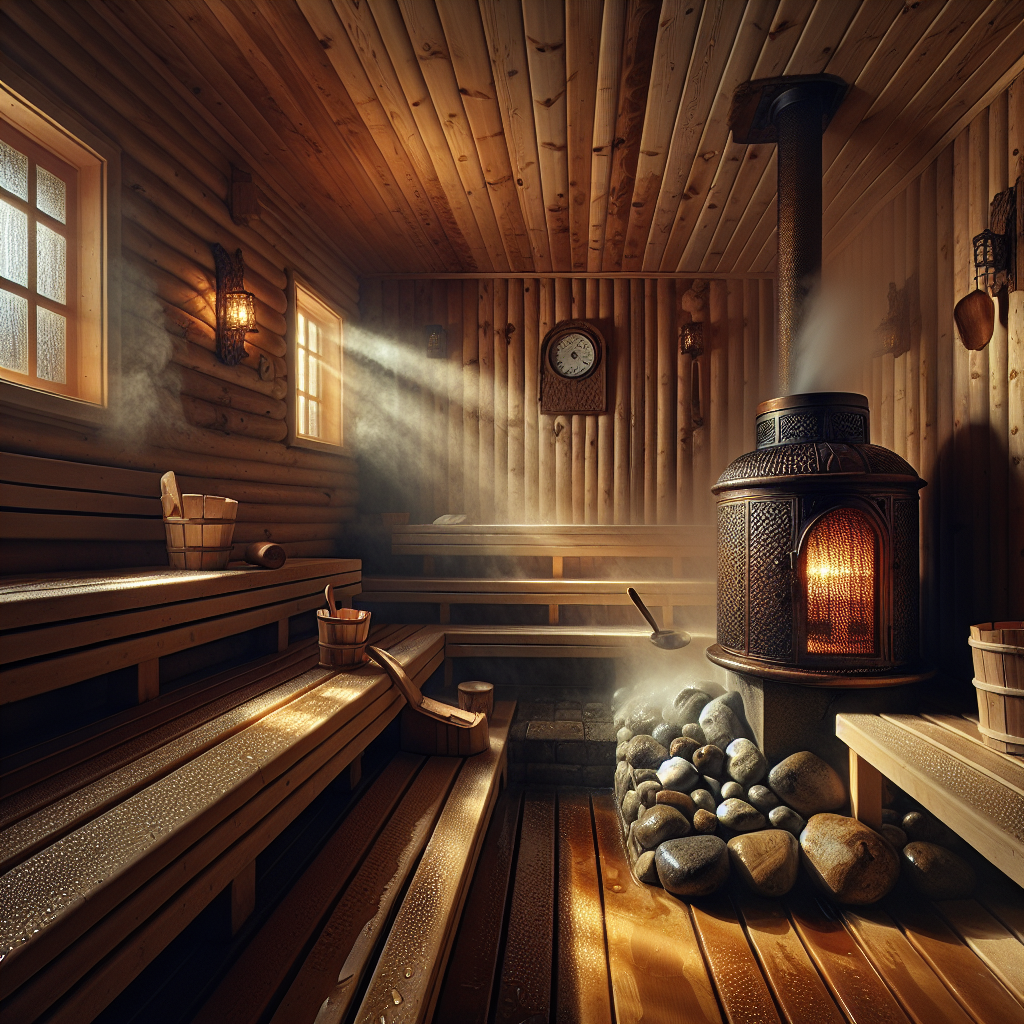Key Takeaways – How to tell if a sauna is wet or dry
Takeaway 1:
If you want to determine whether a sauna is wet or dry, it’s crucial to understand the key differences between the two types based on their heating methods and humidity levels. A dry sauna uses a heater to warm up the space, resulting in low humidity. On the other hand, a wet sauna operates at lower temperatures and generates steam to create high humidity.
Takeaway 2:
To identify whether a sauna is wet or dry, there are a few things you can observe. First, check the temperature; if it’s very high with little to no visible steam, it’s likely a dry sauna. If you walk into a sauna and immediately feel moist air and see steam around you, then it’s definitely wet. Additionally, look for facilities in wet saunas where you can add water to generate more steam.
Takeaway 3:
It’s essential to consider your personal preferences and health considerations when choosing between wet and dry saunas. Both types offer benefits such as relaxation and improved circulation, but those with conditions aggravated by humidity might prefer dry saunas while those seeking congestion relief might opt for wet options. Don’t forget that infrared saunas are also considered “dry” as they don’t significantly raise room humidity levels. If you’re unsure about specific rules or settings in your chosen facility, don’t hesitate to ask staff members for clarification on the type of sauna and how best to use its features safely and effectively. Remember: The choice is yours!
Here’s a Youtube Video about How to tell if a sauna is wet or dry
In the world of wellness, saunas play a vital role, but it’s important to know the distinction between Wet and Dry saunas.
A Wet sauna is characterized by high humidity levels coupled with lower temperatures, creating a steamy environment. On the contrary, a Dry sauna typically boasts higher temperatures but lower humidity levels.
The main indicators to tell if a sauna is wet or dry revolve around these features – wet saunas are steamier and less hot than dry ones.
In real-life scenarios, you might notice more perspiration in a wet sauna due to the high humidity. Finally, our practical tips for accurately identifying whether a sauna is wet or dry boil down to observing temperature and humidity factors as well as personal physical reactions such as sweat output. 
Understanding the Differences Between Wet and Dry Saunas
In configuring my own personal wellness routine, I frequently find myself wrapped in the warm confines of a sauna. Yet, it was only recently when I stumbled upon an intriguing question: “how do you tell if a sauna is wet or dry?”. This launched me into an exploration of sauna types.
A cursory glance might lead one to believe that all saunas are alike, but nothing could be further from the truth. With every sauna comes an array of unique characteristics such as varying sauna moisture levels, different heating methods, and construction materials.
Recognizing the Characteristics of a Wet Sauna
Wet saunas, also known as steam rooms or steam saunas, operate at lower temperatures – usually between 90 and 120 degrees Fahrenheit. You see, in a wet sauna setting, steam is produced by pouring water over hot rocks or with the use of a steam generator.
The real standout feature lies within the wet sauna indicators. Once you step inside one of these, you’ll immediately feel moist air enveloping you while visible steam dances around your body – creating a sensation quite unlike any other.
Examining the Features of a Dry Sauna
If we’re talking about high temperatures coupled with low humidity levels akin to sitting under the desert sun – we’ve undoubtedly ventured into dry sauna territory.
As I discovered during my research – dry saunas utilize heated rocks or an electric heater for warming up space. The primary dry sauna characteristics,, are their high temperatures and low moisture levels.

Download this courtesy guide to optimize your sauna and cold plunge experience and health optimization.
Download the Free Guide TodayKey Indicators to Identify if a Sauna is Wet or Dry
With so many variables at play, how does one go about identifying sauna humidity? All things considered, there are a few strategies that can help distinguish a wet from dry sauna.
- The temperature: Dry saunas are very hot with little to no visible steam.
- The humidity: The air in wet saunas feels moist and thick with steam.
- The presence of water: Many wet saunas have facilities to add water, generating more steam.
- The construction materials: Wood is a common material in dry saunas as it would be damaged by excessive moisture while tiles often line wet saunas due to their ability to withstand constant humidity.
Real Life Scenarios to Help Distinguish Between Wet and Dry Saunas
In any case, let me paint you a picture. Imagine this: you enter a sauna and you’re met with an intense heat but the air is crisp and the room is lined with wood – these are clear signs of being in a dry sauna.
On the other hand, if you’re hit by warm misty air as you enter into a tiled room – congratulations – you’ve found yourself in what we call a traditional steam sauna.
Practical Tips to Accurately Tell if a Sauna is Wet or Dry
Certain features, like those found in Finnish dry saunas,, might be foreign for most people, but being observant won’t fail you. It’s all about paying attention to details such as temperature, humidity levels, construction materials among others.
And by the way, if you happen to be in a sauna with infrared panels, that’s considered dry too! They work without raising room humidity levels significantly.
Now that I think about it, Infrared versus conventional saunas might just be the topic of my next exploration. But for now, remember these pointers: observe the temperature and humidity; look for water or heated rocks; consider the construction materials and when in doubt, ask!
The Benefits of Wet and Dry Saunas
All things considered, both types offer unique benefits – from relaxation and improved circulation to muscle recovery and respiratory benefits. Your choice between wet and dry ultimately depends on your personal preferences, health considerations or simply what you’re looking for in your sauna experience!
It’s a fascinating world out there in the world of saunas – one that offers many lessons in both wellness trends and self-care rituals. It all comes down to understanding which type best suits your needs – wet or dry? The answer lies within your hands!

Understanding how a sauna works and its benefits is crucial before you decide to install one at home. If you’ve ever wondered how much a home sauna costs, several factors might influence the final price, such as its size, type (whether it’s wet or dry), and material used.
Moreover, knowing the difference between wet and dry saunas will help optimize their use. For instance, dry saunas are often heated with rocks while wet saunas, also known as steam rooms, generate heat by boiling water. Similarly, understanding how to work a sauna for beginners can be useful.
What is a sauna bath and steam bath? The two are often confused but have notable differences mainly regarding humidity levels and temperature settings. This information can be beneficial when trying to decide which type of sauna is appropriate for your specific needs.
Saunas are also reputed for their numerous health benefits. For instance, many people wonder if using a sauna can help detox the body. In fact, studies suggest that saunas do aid in detoxification. This occurs through sweating which helps eliminate toxins present in your body.
Lastly, learning how to increase the temperature of your sauna may enhance your experience and its benefits on your health. If you’re seeking ways on how to make your sauna hotter, a few simple tips can help you achieve this.
My Personal Take about How to tell if a sauna is wet or dry
Hey there, buddy!
I’m George, your go-to expert when it comes to saunas and cold plunges.
Trust me, there’s nothing quite like understanding how to tell if a sauna is wet or dry, it’s like peeking behind the curtain of thermal wellness.
Aaah… now that I think about it, being able to differentiate between the two can not only enhance your health benefits but also ensure you have the ultimate relaxing experience!
- A wet sauna, you see, has humidity levels that soar due to the steam produced from pouring water on hot rocks.
- In any case, a dry sauna, conversely doesn’t use steam at all, focusing instead on high heat with minimal moisture.
In closing my friend – whether you choose a wet or dry sauna depends entirely on personal preference and what you find most invigorating. Trust me when I say – either way will open up a world of rejuvenation.
Oh! And don’t forget about cold plunges post-sauna… they really do give you an exhilarating rush that leaves you feeling revitalized! Who knows? You might end up loving this combo as much as I do. So why not take the plunge? It may well be the best decision for your wellness journey.
Cheers to better health and relaxation through saunas & cold plunges!
Frequently Asked Questions about How to tell if a sauna is wet or dry
1. How can I tell if a sauna is wet or dry?
You can determine if a sauna is wet or dry by observing the temperature and humidity levels. If the sauna has high temperatures without visible steam, it’s likely to be dry. On the other hand, if you feel moist air and see steam around you when entering the sauna, it’s wet.
2. What heating methods are used in a dry sauna?
A dry sauna typically uses a heater, which can be heated rocks or an electric heater, to warm up the space. This type of sauna has low humidity and feels similar to sitting under the hot sun in a desert.
3. How is a wet sauna different from a dry sauna?
A wet sauna, also known as a steam room or steam sauna, operates at lower temperatures compared to a dry sauna. Steam is generated by pouring water over hot rocks or using a steam generator, creating high humidity within the space.
4. Are there any visual cues to identify a wet or dry sauna?
Yes, you can look for visible signs to identify whether a sauna is wet or dry. In many wet saunas, you’ll find facilities where water can be added to generate more steam. Additionally, construction materials often differ with wood used in dry saunas and tiles being common in wet saunas due to their ability to withstand constant humidity.
5. What are the benefits of both types of saunas?
Dry saunas are preferred by those who seek relaxation and improved circulation without excessive moisture in the air. Wet saunas offer benefits such as muscle recovery and respiratory benefits due to higher humidity levels that aid congestion relief.
6. Do infrared saunas fall under the category of dry saunas?
Yes, infrared saunas are considered dry saunas because they use infrared panels instead of traditional heating methods. Although they don’t significantly raise room humidity levels, they still provide potential benefits such as relaxation and improved circulation.
Now you know How to tell if a sauna is wet or dry , but that’s only the beginning of your journey here at Sweat N Chill Zone. If you found this post useful there’s more to learn to get you to the next step of your sauna & cold plunge journey. If you read our next articles you’ll be a step further than most people.
Before you go…
Takeaway 1:
If you want to determine whether a sauna is wet or dry, it’s crucial to understand the key differences between the two types based on their heating methods and humidity levels. A dry sauna uses a heater to warm up the space, resulting in low humidity. On the other hand, a wet sauna operates at lower temperatures and generates steam to create high humidity.
Takeaway 2:
To identify whether a sauna is wet or dry, there are a few things you can observe. First, check the temperature; if it’s very high with little to no visible steam, it’s likely a dry sauna. If you walk into a sauna and immediately feel moist air and see steam around you, then it’s definitely wet. Additionally, look for facilities in wet saunas where you can add water to generate more steam.
Takeaway 3:
It’s essential to consider your personal preferences and health considerations when choosing between wet and dry saunas. Both types offer benefits such as relaxation and improved circulation, but those with conditions aggravated by humidity might prefer dry saunas while those seeking congestion relief might opt for wet options. Don’t forget that infrared saunas are also considered “dry” as they don’t significantly raise room humidity levels. If you’re unsure about specific rules or settings in your chosen facility, don’t hesitate to ask staff members for clarification on the type of sauna and how best to use its features safely and effectively. Remember: The choice is yours!
To achieve the maximum benefits, understand the best way to use sauna and steam room on our site.
George From Sweat N Chill Zone
George, the passionate founder of Sweat N Chill Zone, is an ardent advocate for holistic wellness through the healing powers of saunas and cold plunges. With a background in health sciences and a fervent dedication to sharing the benefits of thermal therapy, George curates an informative space, offering insights, tips, and expert advice to help individuals optimize their health and well-being through the transformative effects of heat and cold treatments. Through Sweat N Chill Zone, George aims to inspire and educate, fostering a community centered around rejuvenation and vitality.
Download this courtesy guide to optimize your sauna and cold plunge experience and health optimization.
Download the Free Guide Today


